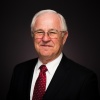Council Pursues Blueprint for the Future
Strategic planning was placed front and center at the Council of Elders August meeting. Nearly all of Monday (Aug. 6) and a significant part of Tuesday and Wednesday were spent mapping out how to perform a major rewrite of the Church's 10-year-old Strategic Plan. While all the Council members have been involved in the annual edit of the existing plan, it has been our desire to take a fresh look at the plan, the process for designing it and the best way to implement it.
For those not familiar with strategic planning, its purpose is to keep the organization sharply focused on its major goals. It is much more than a task list; it's a blueprint for the future. Strategic planning involves clarifying organizational vision, describing the critical issues we face and putting forward intelligent, creative approaches to accomplishing the Church's mission.
A useful, well-designed strategic plan leads an organization to create milestones—markers along the way to determine if we are accomplishing what we set out to do. Strategic planning is all about good stewardship—setting wise goals and holding ourselves accountable for achieving them.
Aug. 6 the Council of Elders entered a full discussion on strategic planning aided by a 35-slide PowerPoint presentation from BoardSource, the nation's leading adviser to nonprofit boards. The presentation was designed to walk a nonprofit board through every critical question that must be addressed before committing to full organizational strategic planning. The previous Friday each member of the Council had been asked to fill out a survey questionnaire to assist in the discussion. Following the day's discussion, the Council expressed the desire to do a full rewrite of the plan and to begin the process immediately.
The Council felt that our best work can be done if we are assisted by a professional facilitator. One of the foremost qualifications for leading the process of strategic planning is neutrality and detachment from the issues making up the plan. A facilitator must be able to ask the hard questions and require answers without getting involved in the issues themselves.
It was universally felt that all the Council members and home office staff are too passionately involved with the mission of the Church to provide that necessary neutrality. The search for a facilitator was authorized and Jason Lovelady, Dee Kilough and Linda Register, all of whom have professional experience with strategic planning as well as candidate interviewing and selection, were appointed as a search committee. Currently the search is underway with interviews of the final pool of candidates to take place before the Feast of Tabernacles.
While at the August meeting, a Strategic Planning Steering Committee was appointed. The committee is made up of three Council members and three home office staff members whose first task will be to work with the facilitator on a “plan to plan”—a document that maps out the steps, the timetable and the people to be involved in the process. Serving on the committee are Dick Thompson, Vic Kubik, Roy Holladay, Jason Lovelady, Dave Register and Larry Salyer.
The Council agreed that it would be ideal to have the new plan ready for the 2008 General Conference of Elders meeting, but realistically that may not happen considering the lead time necessary for “Call and Notice.” Everyone agreed that the quality of the plan takes precedence over the speed with which it is produced, and therefore it cannot be driven by a precise timetable. It is understood that a full organizational strategic plan usually requires six to nine months to create. As the process move forward it will lead, among the steps, to a full board/staff retreat to focus solely on the critical issues that will be part of the Strategic Plan.
While this is a major undertaking, it is clear that there is full Council commitment to the task and a satisfaction that this issue is finally moving forward in a structured way. We anticipate valuable long-term benefits from this investment. UN


